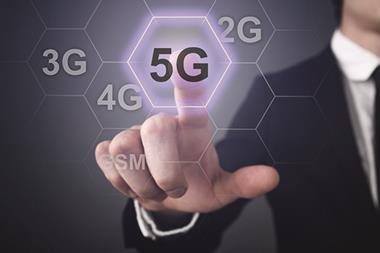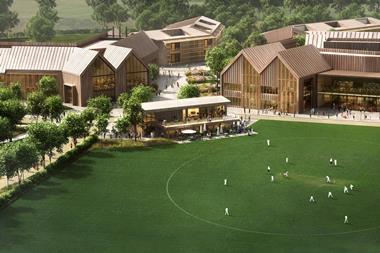In the age of the ‘always on’ executive, employees are expected to be contactable, connected and communicating 24/7. However, there are still pockets of Britain where that expectation is far from a reality.

Despite living in this hyper-connected age, most people have had the extremely frustrating experience of being unable to connect to the wifi of the office, coffee shop or co-working space they are working from. If connectivity is the Achilles’ heel of our age, just imagine the impact this could have on fledgling schemes, such as smart cities, smart streets and smart buildings, as they all start exchanging data – and lots of it.
By 2050, 11 billion people will be demanding connectivity equality across the globe. So what new technologies will help the UK to stay ahead with such rising demand for connectivity? And how will offices across the UK be forced to adapt?
In 2013, Peterborough City Council launched a digital partnership with Vodafone and CityFibre’s Fibre-to-the-Premises programme, which involved extending the full-fibre broadband network to include not only the business community but homes and other firms throughout the city.
Three years after the launch, all major business parks are now on the new network, more than 25% of organisations across the city have been registered, over 100 council sites are connected and an additional 220 CCTV and wifi sites have been added.
Find out more - Brighton & Hove leads the 5G charge as it launches testbed
According to the University Centre Peterborough, prior to the programme’s launch, city-wide connection speeds were perceived to be slow and were cited as a reason for poor commercial performance and increasing customer dissatisfaction. Following the switch, companies felt they were more competitive at home and abroad and the city started to attract new businesses, including tech companies.
Connection between operational bases has also improved quite significantly, allowing multi-sited businesses to enhance their data sharing and remote working.
Why Peterborough?
What puzzles me is why it was Peterborough that was chosen to thrive from this project. True, it has a ‘robust’ economy, according to Opportunity Peterborough, and new business creation in Peterborough was 50% higher than the UK average, but what about other viable options such as Liverpool, Manchester and Newcastle?
The choice of a leading, hyper-connected city cannot be determined by size. Peterborough’s population is over 196,000, whereas Newcastle’s is almost 300,000, Liverpool’s is over 480,000 and Manchester’s is in excess of 541,000. Their need is as great as Peterborough’s – although perhaps population size acted as a deterrent, rather than a catalyst, to implementation. The bigger the city, the more cumbersome and problematical the rollout could be.
Throughout history, once traditional options have been exhausted, new technologies have emerged with a solution to intractable problems. Sometimes, even issues we didn’t realise we had were solved. Think Sony Walkmans, WD-40, Post-It notes and the internet.
We are now at the foothills of a paradigm-busting age in the world of connectivity. In a data-rich world, we have to improve our connectivity across all geographies, whether urban, suburban or rural, as well as improve the efficiency and efficacy of our transmission capacity. If we don’t, offices in secondary and tertiary cities across the UK will suffer.
“Throughout history, once traditional options have been exhausted, new technologies have emerged with a solution to intractable problems”
The UK lies fourth in a global connectivity league, according to a recent United Nations International Telecommunications Union report. If we are to compete successfully in a global market, we cannot afford for our workplaces to lag behind countries such as South Korea and Iceland in the connectivity race.
The solution to our conundrum could be li-fi: a wireless communications network that uses the light spectrum of LED technology. Light waves travel more than 1,000 times faster than the radio frequency spectrum we currently use for wifi. So, it’s no wonder that early evangelists are citing LED technology as the key to unlock unprecedented data and communications bandwidth.
Find out more - Harnessing light could revolutionise office internet access
If anyone close to an LED light can connect with the internet, suddenly a humble light bulb can help form a network for bi-directional data and mobile communications.
Given the fact that we are forecast to have 20 billion ‘Internet of Things’ devices by 2020, we have to find a way to futureproof our networks and our offices if we are to benefit from full connectivity and meet the digital demands of tomorrow.






























No comments yet